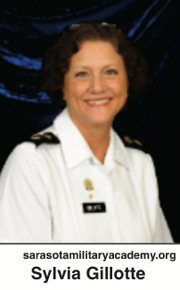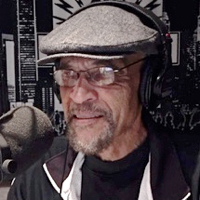Rascals case in brief
In the beginning, in 1989, more than 90 children at the Little Rascals Day Care Center in Edenton, North Carolina, accused a total of 20 adults with 429 instances of sexual abuse over a three-year period. It may have all begun with one parent’s complaint about punishment given her child.
Among the alleged perpetrators: the sheriff and mayor. But prosecutors would charge only Robin Byrum, Darlene Harris, Elizabeth “Betsy” Kelly, Robert “Bob” Kelly, Willard Scott Privott, Shelley Stone and Dawn Wilson – the Edenton 7.
Along with sodomy and beatings, allegations included a baby killed with a handgun, a child being hung upside down from a tree and being set on fire and countless other fantastic incidents involving spaceships, hot air balloons, pirate ships and trained sharks.
By the time prosecutors dropped the last charges in 1997, Little Rascals had become North Carolina’s longest and most costly criminal trial. Prosecutors kept defendants jailed in hopes at least one would turn against their supposed co-conspirators. Remarkably, none did. Another shameful record: Five defendants had to wait longer to face their accusers in court than anyone else in North Carolina history.
Between 1991 and 1997, Ofra Bikel produced three extraordinary episodes on the Little Rascals case for the PBS series “Frontline.” Although “Innocence Lost” did not deter prosecutors, it exposed their tactics and fostered nationwide skepticism and dismay.
With each passing year, the absurdity of the Little Rascals charges has become more obvious. But no admission of error has ever come from prosecutors, police, interviewers or parents. This site is devoted to the issues raised by this case.
On Facebook
Click for earlier Facebook posts archived on this site
Click to go to
Today’s random selection from the Little Rascals Day Care archives….
Click for earlier Facebook posts archived on this site
Click to go to
Today’s random selection from the Little Rascals Day Care archives….
The night Koppel redefined ‘objective and reliable’
April 24, 2013
“Ted Koppel said the idea for (a “Nightline” episode criticizing juries’ growing skepticism toward child-witnesses) had been brought to him by Civia Tamarkin, who although she ‘served on the advisory board of an organization called Believe the Children insists that she remains neutral on the subject…. We have found her to be a useful, objective and reliable source.’
“Tamarkin had indeed devoted a lot of attention to child sexual-abuse cases, along with an abiding conviction that most defendants are guilty…. She believes the McMartin prosecution should have resulted in convictions (and) has praised the prosecution in the Little Rascals case….
“I interviewed prosecutors and defense lawyers in Little Rascals and read trial transcripts. It was clear the child witnesses had been persistently manipulated….”
– From “Koppel lost his balance on child witnesses” by Washington Post columnist Nat Hentoff (Dec. 3, 1996)
Believe the Children, organized by McMartin parents, later expanded to become a clearinghouse for ritual abuse allegations. It apparently disbanded after holding a final conference in Arlington Heights, Illinois, in 1995.
In this classroom, only certainty about ‘ritual abuse’
 Aug. 3, 2014
Aug. 3, 2014
“Over the last 12 years, there have been hundreds of day care cases across the United States which involved allegations of ritual child abuse. The discovery and successful prosecution of a number of these cases has done much to expose cult activity and increase our awareness. While day care cases may ultimately be the ‘Achilles’ heel’ of organized cults who desire to expand their power and influence, there is nonetheless tremendous reluctance on the part of most victims to come forward. This is primarily due to the response of the media and the public.
“Along with the very real fear of reprisal or death associated with disclosure, adult survivors of ritual abuse who come forward face not only a climate of disbelief, but a lack of support services as well. Having endured the unspeakable horrors of ritual abuse, they face further victimization by an entire system in denial…..
“It is also often difficult to obtain conclusive medical evidence supportive of a child’s allegations of ritual physical and sexual abuse. Most cults use very sophisticated abuse, torture, and mind control techniques which are difficult to detect. For example, during the abuse and programming of children, cults may use the following: electroshock; pins and needles which are inserted under the fingernails or into sexual or other orifices of the body; knife cuts or burns into the scalp, onto the soles of the feet, or in the creases of the skin; as well as injuries designed to be explainable by otherwise acceptable means….
“Many cults either own or have access to a crematorium, and are assisted by cult physicians and/or coroners who cover up the cause of death of their victims. Less sophisticated methods for body disposal which have been used effectively are lime or acid pits, as well as tree shredders….
“When a concerned parent or therapist manages to make the child feel safe enough to make a disclosure, the system responds by discounting the allegations on the basis that the disclosure was not made at the onset of the therapeutic process….
“Children frequently report having been taken by train, boat, submarine or airplane to a specific location to participate in ritual activity. Often they are blindfolded and only told the name of the location after they have arrived.
“In reality, such transportation may only have been simulated, and a false location given. Or the child may, in fact, have been in a plane which flew in a circle for 20 minutes, with the ultimate destination falsified. In either case, facts are distorted to discredit later disclosures….
“(Footnote:) My contact with survivors in South Carolina and other states in the South reveals that alligators are commonly used as a means of disposal in these areas….”
– From “Representing Children in Family Court: A Resource Manual for Attorneys and Guardians Ad Litem,” a (no longer available) publication of the South Carolina Bar (1993, 1995) by Sylvia Lynn Gillotte, chairman of the Resource Manual Project, Officer of the Governor, Guardian Ad Litem Program, in Spartanburg, S.C.
Ms. Gillotte makes an earnest and articulate argument that the nation’s day cares were (are?) plagued by “satanic ritual abuse.” Predictably absent in her 5,000-word manifesto, however, is anything approaching the requisite extraordinary evidence for extraordinary claims. Electroshock? Tree shredders? Plane rides? Alligators? “Cult physicians and/or coroners”?
Unlike so many who shared her convictions in the 1980s and ’90s, Ms. Gillotte has not retreated from the arena. Now an adjunct professor in the department of criminology at the University of South Florida Sarasota-Manatee, she teaches a course on “Legal Perspectives on Crimes Against Children” that features a main text by John E.B. Myers and a Skype interview with Randy Noblitt.
Professor Gillotte’s syllabus is unusual if not unique in 21st-century academia. Much more typical: Catherine Caldwell-Harris’s at Boston University.
Despite our wide differences, Professor Gillotte has generously taken the time to address my skepticism about ritual abuse. Later this week I’ll be quoting from our exchange.
‘What may be the largest child sexual abuse trial this country has ever seen’
July 22, 2016
“FARMVILLE, N.C. – Farmville’s only courtroom has never played host to a felony trial. This week, the town’s 4,000 residents will watch a parade of jurors, lawyers, psychologists, parents and children converge on that courtroom. There, they will unfold what may be the largest child sexual abuse trial this country has ever seen: the trial of Robert F. Kelly Jr. of Edenton.
 “The trial was moved to this one-blink community in Pitt County, 65 miles west of Edenton in Eastern North Carolina, because of pretrial publicity.
“The trial was moved to this one-blink community in Pitt County, 65 miles west of Edenton in Eastern North Carolina, because of pretrial publicity.
“But the spotlight will find Farmville, if not for the unprecedented number of sexual abuse indictments, then for the sordid nature of the charges. And if not for that, then for the impact the trial – expected to last three to four months – could have on future large-scale child-abuse prosecutions.
“Jury selection is scheduled to start today….”
– From “Witnesses, jurors, lawyers mass for sexual-abuse trial” by Knight-Ridder News Service in the Baltimore Sun (July 22, 1991)
In fact, the trial would last nine months, not three or four. Although prosecutors won initial convictions of both Kelly and Dawn Wilson, for whatever reasons – surely including the eye-opening effects of Ofra Bikel’s “Innocence Lost” trilogy – the nation was spared “future large-scale child-abuse prosecutions.”
![]()
Holdout jurors face – and often succumb to – relentless pressure

facebook.com
Earl Ofari Hutchinson
Dec. 28, 2016
“The problem of juror pressure on a dissenting juror has long been known by defense attorneys and prosecutors.
“In a National Center for State Courts project on hung juries, researchers surveyed 367 unanimous decisions…. In nearly 40 percent of the cases at least one juror [disagreed] but went along with the majority and made the verdict unanimous….
“Research shows that dissenting jurors often go along not because they are convinced about points of evidence but because they bow to ‘normative pressure’: A lone holdout is under relentless and harsh pressure from other jurors to knuckle under. The pressure from the push for speed, the verbal battering and the threat of ostracism is virtually impossible to resist.
“The problem is made worse [in cases] when it’s impossible for a dissenting juror to say with absolute certainty whether the position of the majority is the right one and when the verdict could do horrible legal damage….”
– From “Why Zimmerman Juror B29 Believed in His Guilt But Still Voted to Acquit” by Earl Ofari Hutchinson on the Huffington Post (July 28, 2013)
Bob Kelly’s jury serves as a sad example of the contaminated chemistry of verdict making.
![]()











0 CommentsComment on Facebook